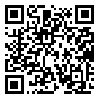Volume 8, Issue 3 (September 2021)
J. Food Qual. Hazards Control 2021, 8(3): 94-95 |
Back to browse issues page
Download citation:
BibTeX | RIS | EndNote | Medlars | ProCite | Reference Manager | RefWorks
Send citation to:



BibTeX | RIS | EndNote | Medlars | ProCite | Reference Manager | RefWorks
Send citation to:
Fatahi-Bafghi M, Zandi H. Whole-Genome Sequencing in Food-borne Pathogenic Bacteria. J. Food Qual. Hazards Control 2021; 8 (3) :94-95
URL: http://jfqhc.ssu.ac.ir/article-1-907-en.html
URL: http://jfqhc.ssu.ac.ir/article-1-907-en.html
Research Center for Food Hygiene and Safety, Shahid Sadoughi University of Medical Sciences, Yazd, Iran , hengameh_zandi@yahoo.com
Abstract: (1281 Views)
This article has no abstract.
DOI: 10.18502/jfqhc.8.3.7194
DOI: 10.18502/jfqhc.8.3.7194
References
1. Aliyu S. (2014). Bacterial whole genome sequencing: the future of clinical bacteriology. Annals of Nigerian Medicine. 8: 51. [DOI:10.4103/0331-3131.153352]
2. Besser J., Carleton H.A., Gerner-Smidt P., Lindsey R.L., Trees E. (2018). Next-generation sequencing technologies and their application to the study and control of bacterial infections. Clinical Microbiology and Infection. 24: 335-341. [DOI: 10.1016/j.cmi.2017.10.013] [DOI:10.1016/j.cmi.2017.10.013] [PMID] [PMCID]
3. Carleton H.A., Gerner-Smidt P. (2016). Whole-genome sequencing is taking over foodborne disease surveillance. Microbe. 11: 311-317. [DOI:10.1128/microbe.11.311.1]
4. Deng X., Den Bakker H.C., Hendriksen R.S. (2016). Genomic epi- demiology: whole-genome-sequencing-powered surveillance and outbreak investigation of foodborne bacterial pathogens. Annual Review of Food Science and Technology. 7: 353-374. [DOI: 10.1146/annurev-food-041715-033259] [DOI:10.1146/annurev-food-041715-033259] [PMID]
5. Fleischmann R.D., Adams M.D., White O., Clayton R.A., Kirkness E.F., Kerlavage A.R., Bult C.J., Tomb J.-F., Dougherty B.A., Merrick J.M., McKenney K., Sutton G., et al. (1995). Whole-genome random sequencing and assembly of Haemophilus influenzae Rd. Science. 269: 496-512. [DOI: 10.1126/science. 7542800] [DOI:10.1126/science]
6. Franz E., Gras L.M., Dallman T. (2016). Significance of whole genome sequencing for surveillance, source attribution and microbial risk assessment of foodborne pathogens. Current Opinion in Food Science. 8: 74-79. [DOI: 10.1016/j.cofs.2016. 04.004] [DOI:10.1016/j.cofs.2016.04.004]
7. Fraser C.M., Gocayne J.D., White O., Adams M.D., Clayton R.A., Fleischmann R.D., Bult C.J., Kerlavage A.R., Sutton G., Kelley J.M., Fritchman J.L., Weidman J.F., et al. (1995). The minimal gene complement of Mycoplasma genitalium. Science. 270: 397-404. [DOI: 10.1126/science.270.5235.397] [DOI:10.1126/science.270.5235.397] [PMID]
8. Gupta S.K., Padmanabhan B.R., Diene S.M., Lopez-Rojas R., Kempf M., Landraud L., Rolain J.-M. (2014). ARG-ANNOT, a new bioinformatic tool to discover antibiotic resistance genes in bacterial genomes. Antimicrobial Agents and Chemotherapy. 58: 212-220. [DOI: 10.1128/AAC.01310-13] [DOI:10.1128/AAC.01310-13] [PMID] [PMCID]
9. Kwong J.C., Mccallum N., Sintchenko V., Howden B.P. (2015). Whole genome sequencing in clinical and public health microbiology. Pathology. 47: 199-210. [DOI: 10.1097/PAT. 0000000000000235] [DOI:10.1097/PAT.0000000000000235] [PMID] [PMCID]
10. Land M., Hauser L., Jun S.-R., Nookaew I., Leuze M.R., Ahn T.-H., Karpinets T., Lund O., Kora G., Wassenaar T., Poudel S., Ussery D.W. (2015). Insights from 20 years of bacterial genome sequencing. Functional and Integrative Genomics. 15: 141-161. [DOI: 10.1007/s10142-015-0433-4] [DOI:10.1007/s10142-015-0433-4] [PMID] [PMCID]
11. Ronholm J., Nasheri N., Petronella N., Pagotto F. (2016). Navigating microbiological food safety in the era of whole-genome sequencing. Clinical Microbiology Reviews. 29: 837-857. [DOI: 10.1128/CMR.00056-16] [DOI:10.1128/CMR.00056-16] [PMID] [PMCID]
12. Scallan E., Hoekstra R.M., Angulo F.J., Tauxe R.V., Widdowson M.-A., Roy S.L., Jones J.L., Griffin P.M. (2011). Foodborne illness acquired in the United States-major pathogens. Emerging Infectious Diseases. 17: 7-15. [DOI: 10.3201/ eid1701.P11101] [DOI:10.3201/eid1701.P11101]
13. Wells J.M., Bennik M.H.J. (2003). Genomics of food-borne bacterial pathogens. Nutrition Research Reviews. 16: 21-35. [DOI: 10.1079/NRR200358] [DOI:10.1079/NRR200358] [PMID]
14. World Health Organization (WHO). (2018). Whole genome sequencing for foodborne disease surveillance.
| Rights and permissions | |
 |
This work is licensed under a Creative Commons Attribution-NonCommercial 4.0 International License. |







